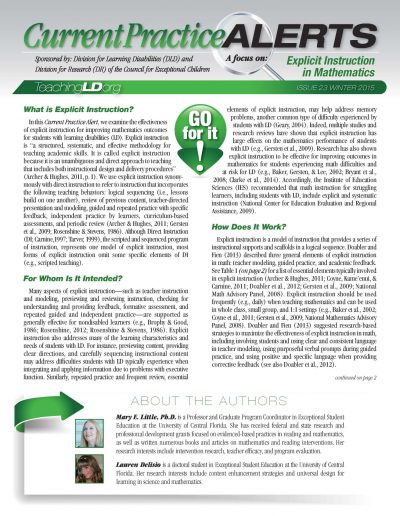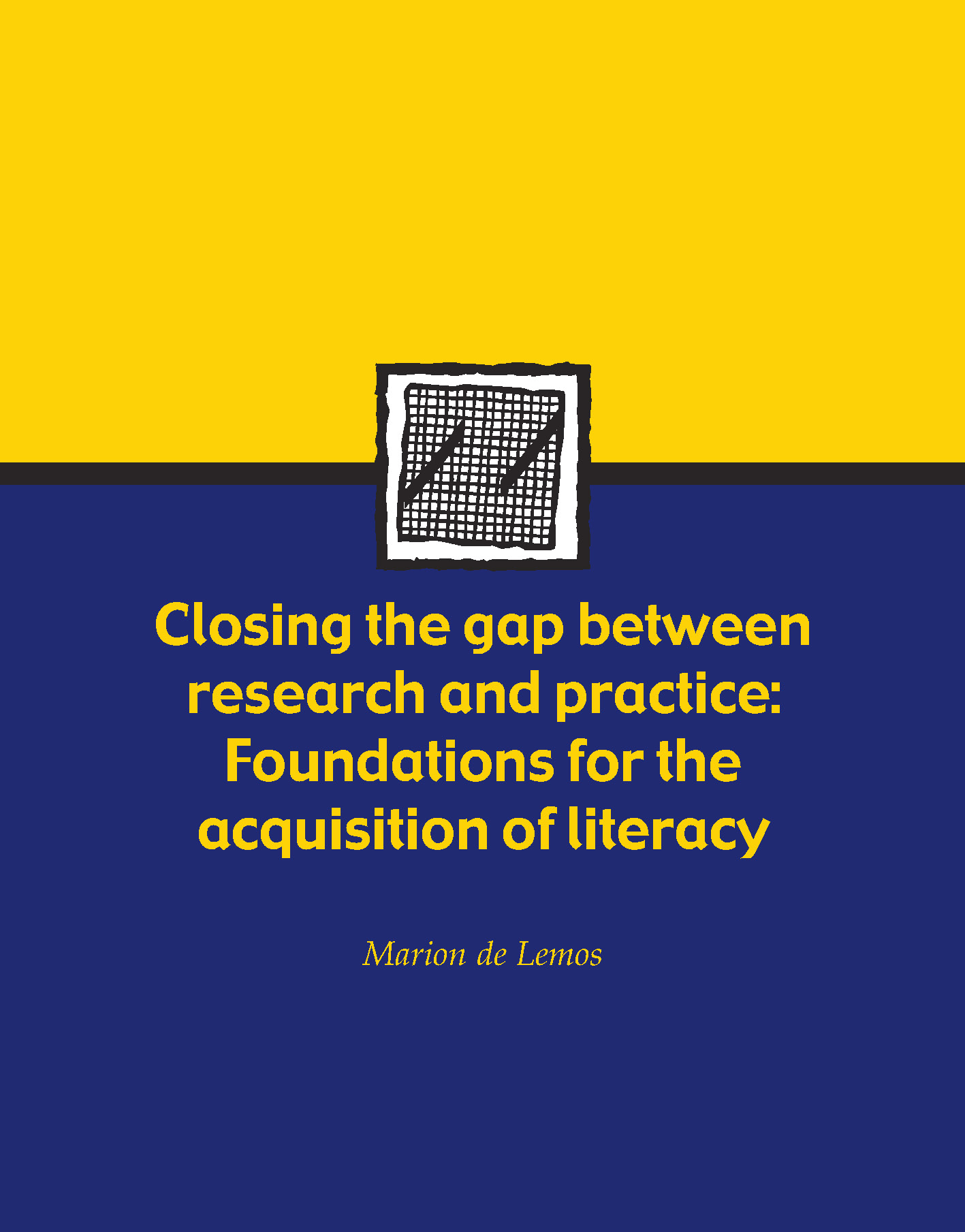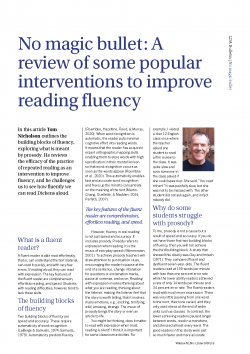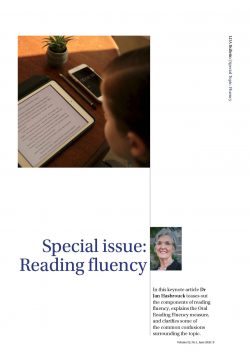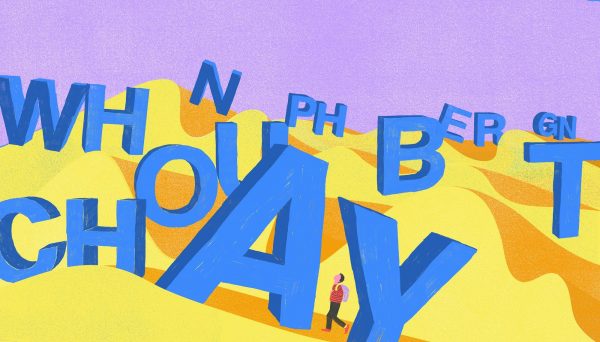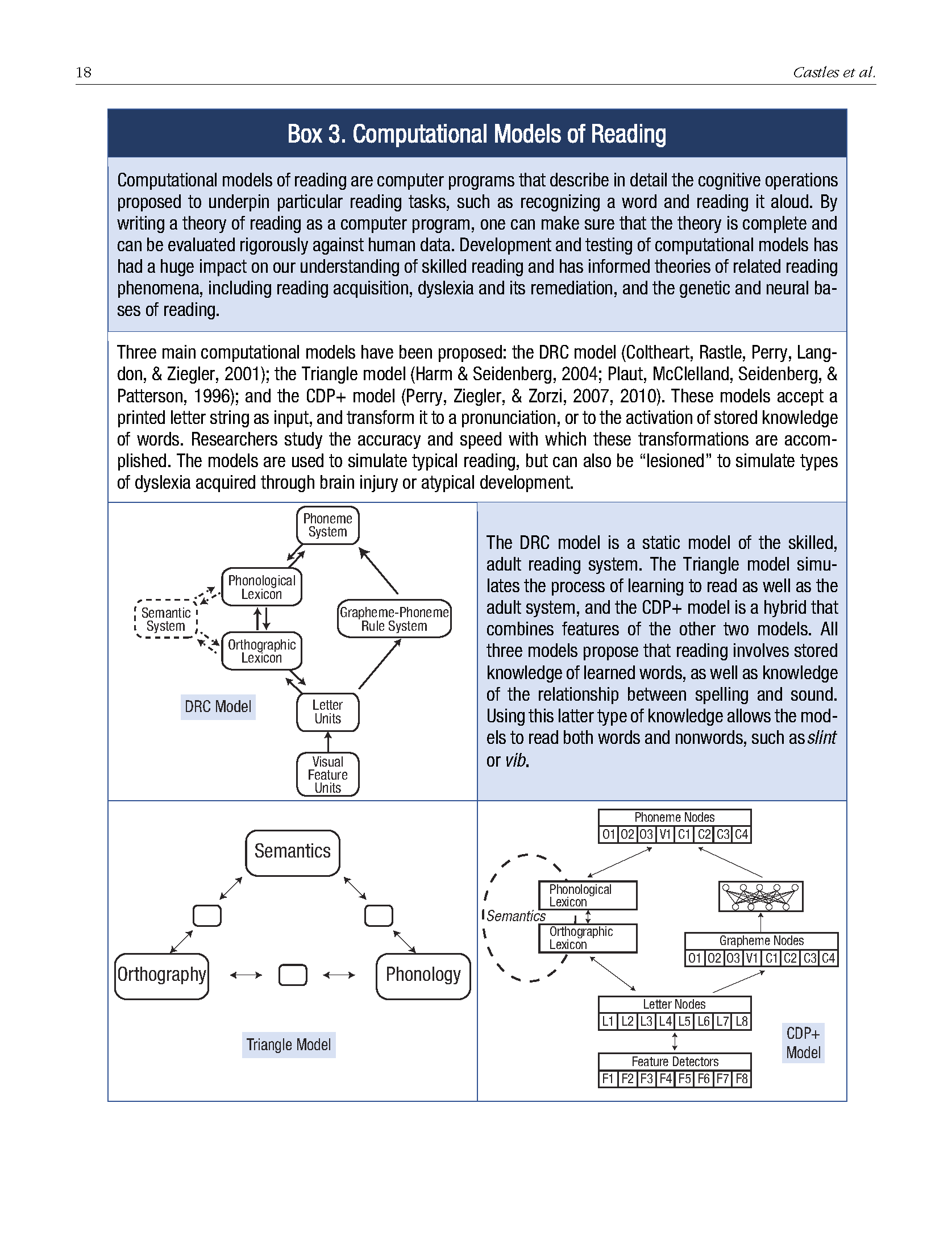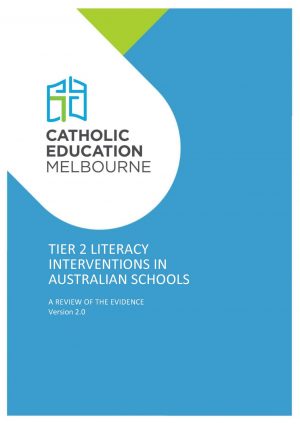In this Current Practice Alert, we examine the effectiveness of explicit instruction for improving mathematics outcomes for students with...
In this Current Practice Alert, we examine the effectiveness of explicit instruction for improving mathematics outcomes for students with learning disabilities (LD). Explicit instruction is “a structured, systematic, and effective methodology for teaching academic skills. It is called explicit...
In this Current Practice Alert, we examine the effectiveness of explicit instruction for improving mathematics outcomes for students with learning disabilities (LD). Explicit instruction is “a structured, systematic, and effective methodology for teaching academic skills. It is called explicit instruction because it is an unambiguous and direct approach to teaching that includes both instructional design and delivery procedures” (Archer & Hughes, 2011, p. 1). We use explicit instruction synonymously with direct instruction to refer to instruction that incorporates the following teaching behaviors: logical sequencing (i.e., lessons build on one another), review of previous content, teacher-directed presentation and modeling, guided and repeated practice with specific feedback, independent practice by learners, curriculum-based assessments, and periodic review (Archer & Hughes, 2011; Gersten et al., 2009; Rosenshine & Stevens, 1986). Although Direct Instruction (DI; Carnine,1997; Tarver, 1999), the scripted and sequenced program of instruction, represents one model of explicit instruction, most forms of explicit instruction omit some specific elements of DI (e.g., scripted teaching).

